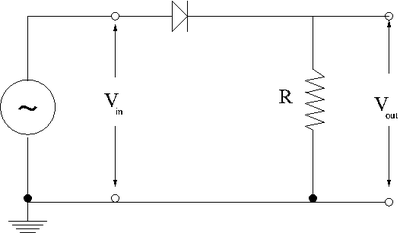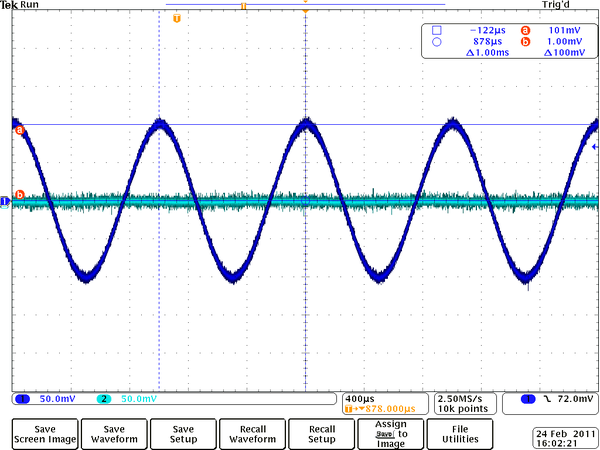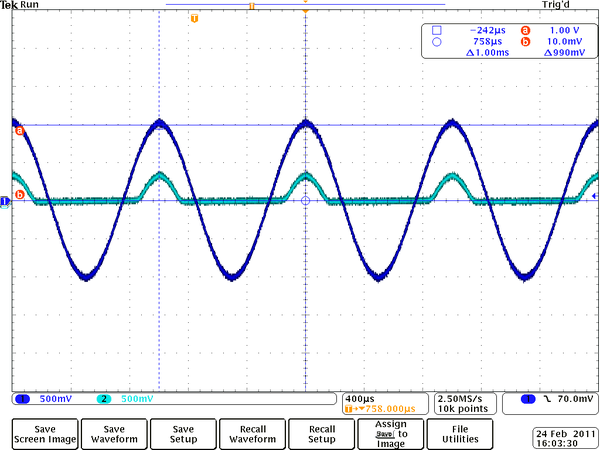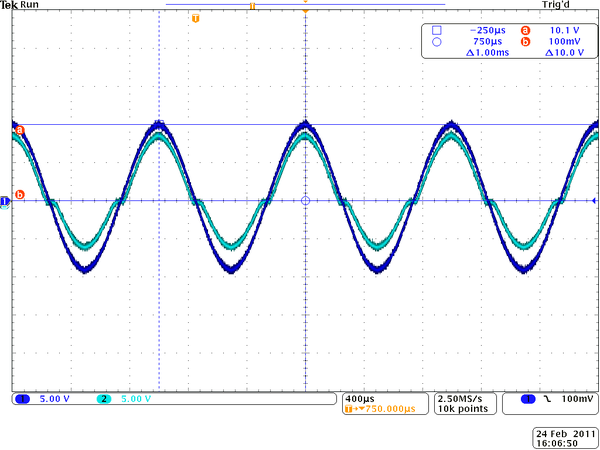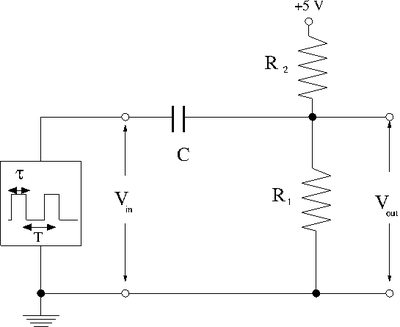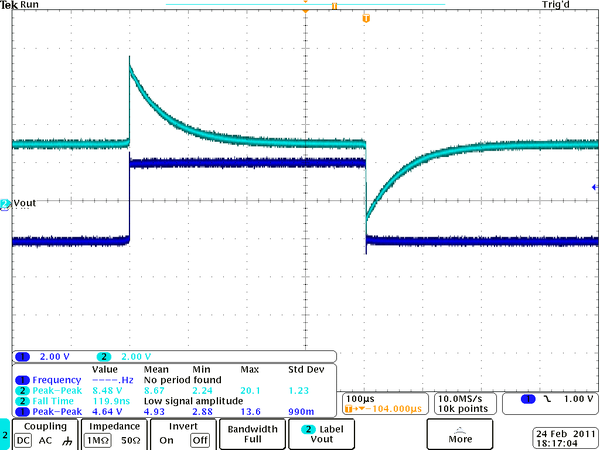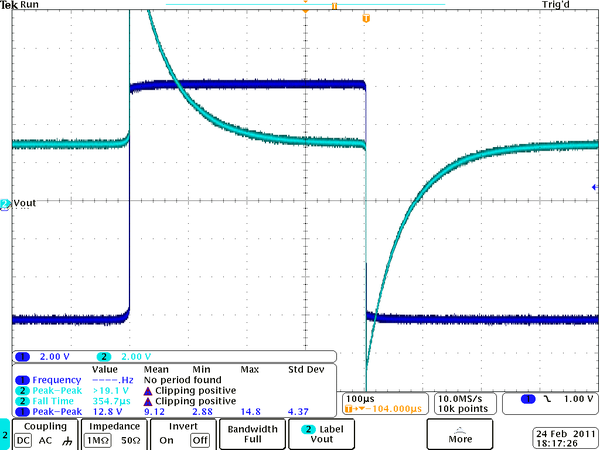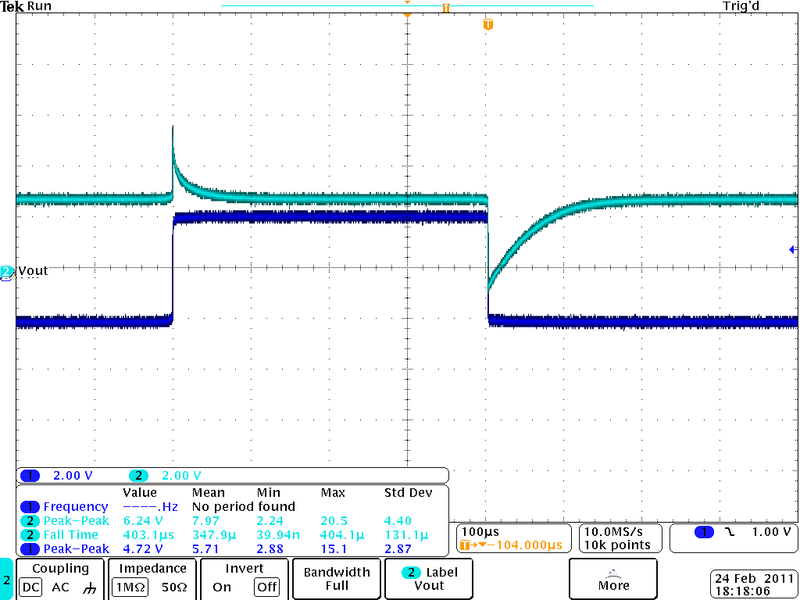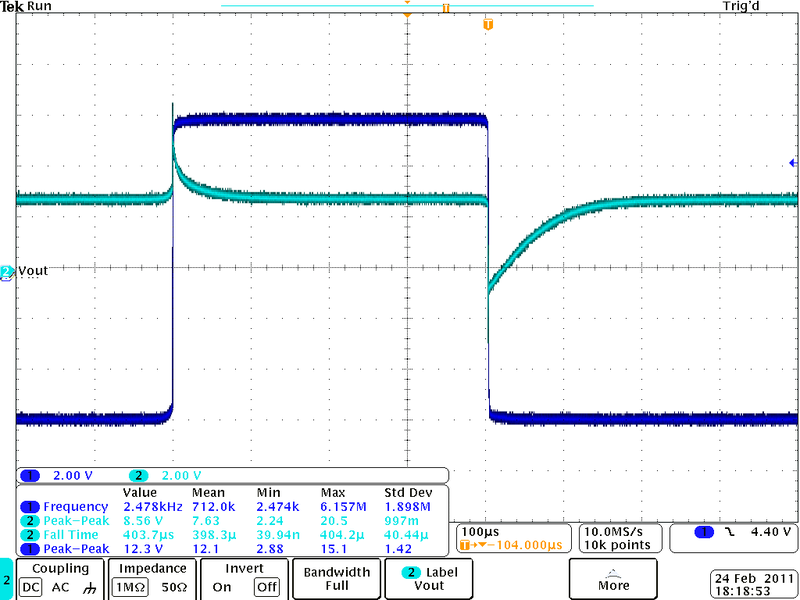Difference between revisions of "Lab 9 RS"
| Line 10: | Line 10: | ||
| − | I am going to use: | + | <pre style="color:red">I am going to use: |
1) Zener diode 4.7 V 1N5230B-T | 1) Zener diode 4.7 V 1N5230B-T | ||
| − | 2) the resistor <math>R = 10.3 \Omega</math> | + | 2) the resistor <math>R = 10.3 \Omega</math> </pre> |
Revision as of 05:01, 25 February 2011
Lab 9: Diode Circuits
Clipping Circuit
1.) Construct the circuit shown below using a silicon diode.
I am going to use: 1) Zener diode 4.7 V 1N5230B-T 2) the resistor <math>R = 10.3 \Omega</math>
2.) Use a sine wave generator to drive the circuit so where V and = 1kHz. (20 pnts)
3.) Based on your observations using a oscilloscope, sketch the voltages and as a function of time.
4.) Do another sketch for = 1.0 V and another for 10.0 V (DONT LET ANY SMOKE OUT!). (20 pnts)
Below my screen save for = 1.0 V
And below my screen save for = 10.0 V
For the last sketch the output voltage is . Let's estimate the power dissipated in resistor and diode. The current can be calculated by .
The resistor power is given by . So we are OK here.
The diode power is given by . So we are OK here as well. No any smoke out.
Differentiating Circuit with clipping
1) Construct the circuit below.
2) Select and such that the current from the +5V DC source is less than 1.0 mA and the DC voltage at is 3 V when there is no input pulse.
Because we want to keep the current below and using . Solving this inequality we get the first condition for and
Also because we want and using . Without any input pulse . Solving this simple equation we get the second condition for and
I am going to use and which satisfy both conditions above
3) Select a capacitor and a pulse width to form a differentiating circuit for the pulse from the signal generator. Hint: .
Taking , we have . Also taking .
And choosing the the pulse width I will be able to make a good differentiator circuit.
4) plot and as a function of time using your scope observations. (20 pnts)
Below the plot of input and output signal for
In the plot below I changed the input voltage to .
As we can see the output signal has changed as well. So there is no any clipping off of output signal.
5) Now add the diode circuit from part 1 to prevent from rising above +5 V. Sketch the new circuit below.
6) plot and as a function of time with the diode circuit you added using your scope observations. (the diode should clip off positive spikes) (20 pnts)
Below the plot of input and output signal for with clipping off diode
Here I changed the input voltage to
As we can see the output signal doesn't changed.
Now my diode clipping off the positive signal at about +5 V and clipping off the negative signal at about -1 V. And the output doesn't change when we change the amplitude of input signal.
Questions
- Explain your results in parts 1 & 2 in terms of the diode turn-on voltage. (20 pnts)
Forest_Electronic_Instrumentation_and_Measurement Go Back to All Lab Reports
